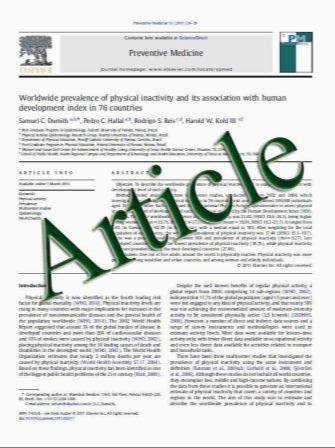MDM2 SNP309, gene-gene interaction, and tumor susceptibility: an updated meta-analysis
- نوع فایل : کتاب
- زبان : انگلیسی
- مؤلف : Yan Wan (wy_epi2009@163.com) Wei Wu (wuwei@mail.cmu.edu.cn) Zhihua Yin (zhyin@mail.cmu.edu.cn) Peng Guan (pguan@mail.cmu.edu.cn) Baosen Zhou (bszh
- چاپ و سال / کشور: 2011
Description
Background The tumor suppressor gene p53 is involved in multiple cellular pathways including apoptosis, transcriptional control, and cell cycle regulation. In the last decade it has been demonstrated that the single nucleotide polymorphism (SNP) at codon 72 of the p53 gene is associated with the risk for development of various neoplasms. MDM2 SNP309 is a single nucleotide T to G polymorphism located in the MDM2 gene promoter. From the time that this well-characterized functional polymorphism was identified, a variety of case-control studies have been published that investigate the possible association between MDM2 SNP309 and cancer risk. However, the results of the published studies, as well as the subsequent meta-analyses, remain contradictory. Methods To investigate whether currently published epidemiological studies can clarify the potential interaction between MDM2 SNP309 and the functional genetic variant in p53 codon72 (Arg72Pro) and p53 mutation status, we performed a meta-analysis of the risk estimate on 27,813 cases with various tumor types and 30,295 controls. Results The data we reviewed indicated that variant homozygote 309GG and heterozygote 309TG were associated with a significant increased risk of all tumor types (homozygote comparison: odds ratio (OR) =1.25, 95% confidence interval (CI) =1.13-1.37; heterozygote comparison: OR=1.10, 95% CI=1.03-1.17). We also found that the combination of GG and Pro/Pro, TG and Pro/Pro, GG and Arg/Arg significantly increased the risk of cancer (OR=3.38, 95% CI=1.77-6.47; OR=1.88, 95% CI=1.26-2.81; OR=1.96, 95% CI=1.01-3.78, respectively). In a stratified analysis by tumor location, we also found a significant increased risk in brain, liver, stomach and uterus cancer (OR=1.47, 95% CI=1.06-2.03; OR=2.24, 95%CI=1.57-3.18; OR=1.54, 95%CI=1.04-2.29; OR=1.34, 95%CI=1.07-1.29, respectively). However, no association was seen between MDM2 SNP309 and tumor susceptibility in the stratified analysis by p53 mutation status (GG vs TT: OR=1.17, 95% CI=0.75-1.82 and TG vs TT: OR=1.09, 95% CI=0.89-1.34 for positive p53 mutation status; GG vs TT: OR=0.95, 95% CI=0.72-1.25 and TG vs TT: OR=1.06, 95% CI=0.85-1.30 for negative p53 mutation status). Conclusions The analyses indicate that MDM2 SNP309 serves as a tumor susceptibility marker, and that there is an association between MDM2 SNP309 and p53 Arg72Pro regarding tumor susceptibility. Further studies that take into consideration environmental stresses and functional genetic variants in the p53-MDM2-related genes are warranted.
ISSN 1471-2407 Article type Research article Submission date 28 September 2010 Acceptance date 29 May 2011 Publication date 29 May 2011


